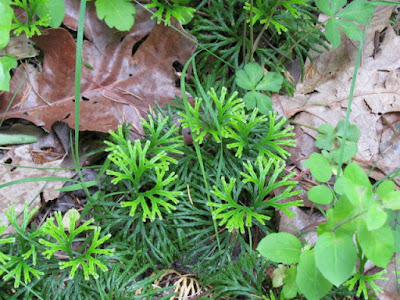Each season brings a different look to the garden. I enjoy each one, but I must say that plants are uniquely beautiful in winter. Now is a great time to see a plant’s texture and form - each unique and mystical.
left to right: Silver maple, red maple/dogwood, & redbud
Look for the differences between these
trees this winter: oak, maple, and redbud. Oaks are the kings of the forest.
They soar well above the maples and smaller redbuds. Oaks are majestic in size
and texture.
The white and bur oak are most majestic. A white oak will grow well over 100 feet tall in the wild. It has a medium to coarse texture in winter, but the wide-spreading branches exhibit a strong, bold appearance. Bur oaks are a bit more coarse in texture and probably even more majestic with massive trunks and stout branches.
There are many different types of oaks though. A pin oak is much different from the white and bur. Although still medium to coarse textured in winter, a pin oak has a strongly pyramidal habit. It is a strong central leader and pendulous lower branches. My college classmates called this the 55-mile per hour tree because we could recognize it even at highway speeds.
Maples also come in many different shapes and sizes, from the dainty amur maple to the sturdy sugar maple to the weak silver maple. Sugar maples grow 60 to 75 feet tall with a rounded character. They are hard, sturdy trees. Their texture is medium in winter. Notice their beautiful bark, which with age becomes deeply furrowed, with long irregular thick plates or ridges.
Silver maples are very popular because they grow fast. Unfortunately this is not always a good trait, since fast growing trees are usually also weak-wooded, often breaking in wind and ice.
The silver maples grow a bit more oval than rounded and are a bit coarser in the winter, often looking disheveled.
Amur maples and redbuds are similar in that they are both small, understory trees. The amur maple is a small tree or sometimes a multi-stemmed shrub, but is usually round shaped. It has very slender, fine branches and thus a medium-fine texture.
Redbud is a small tree with medium winter texture. Although best known for its spring flowers, it also has interesting bark in winter. The older bark is black or brownish with orange inner bark peeking through.
Enjoy looking at trees this winter. Also notice how terrible the topped trees look! Please do not top trees. It results in very weak, ugly trees!
Originally Published as: Ledger Column 1-8-2000, 1-5-2013; News release 1-8-2018










